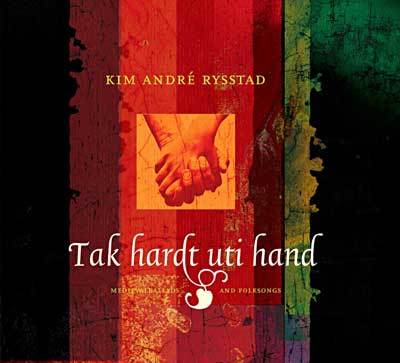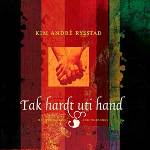- artist:Kim-André Rysstad
- featured artist:Daniel Sandén-Warg, Trond Sporsheim Berg
- region:Nordic
- release year:2008
- style(s):Folk, Traditional
- country:Norway
- formats:CD (Compact Disc)
- record posted by:Etnisk Musikklubb
- label:Etnisk Musikklubb
- publisher:Etnisk Musikklubb
THIS IS THE FIRST SOLO ALBUM from the young folk singer Kim André Rysstad (b. 1981) from Rysstad in Setesdal. In the growing forest of younger, competent performers of vocal folk music in Norway, he is one of those who, in a short period of time, has established himself as a highly espected performer, with solid musical integrity.
Kim André comes from a particularly gifted family in Setesdal, which has produced several well-known
culture personalities, e.g. within the art of poetry. On track no.6 we hear the stev (Norwegian folk verse) ”Der e so vent å vesteheio”, which is written by his greatgrandfather Jon Bjørgulvsson Rysstad (1877– 1966), one of the most respected stev writers in Setesdal. Kim André has had the song within him ever since he was a little boy, and he was early introduced to folk music. But it was a different type of song he first got devoted to and chose to concentrate about. That was pop ballads (Whitney Houston has been a great source of inspiration), musical repertoire and classical song. After upper secondary school, he took a break from studying, and was hired at Agder folk music archive. He listened to old vocal recordings day after day, and instead of getting tired of this, he wanted more. Kim André became very fascinated by this material, and chose to emphasize this expression in his coming music career. What a fortune for the folk music environment! Of additional education, he has among other things attended the Folk Music study in Rauland, and is currently attending the Bachelor study at Ole Bull Akademiet in Voss. With his strong musicality and feeling for style, he has quickly picked up the elements that characterize the traditional folk song which is generally called “kveding”. With teachers like Kirsten Bråten Berg, Ånon Egeland and Ragnhild Furholt, among others, he has perfected himself in the song style from Setesdal/Agder. But he has also been a student of several other leading established folk singers from other parts of the country. Kim André has his own personal expression. His singing is calm and moving, in the folk music terminology we call it “dåmrik”. I remember a programme on NRK, where Lillebjørn Nilsen said about his musical expression: ”It is not the sledge hammer that is my weapon.” This is also a good description for Kim André. It is written about the old great folk singer Svein Hovden (1841–1924), that he, without the big gestures, could sing people into a sort of
trance, and everything became quiet and some started crying. Kim André has much of this moving peace, the meditative in his singing. He calms his listeners, and makes them join him on his journey through the stories in his songs. But if he wants to,he can also come through with ”kraftstevjinga” (powerful singing), which was the expression used by some of the elderly great folk singers in Setesdal (listen to track 8). In the ballad ”Dei frearlause menn” (track 3) it says; ”Dei makta kji brjote dei frosne band..” (“They could not break the frozen bonds..”). After listening through this album, I assume that Kim André has managed to break whatever the listener must have had of frozen bonds.



